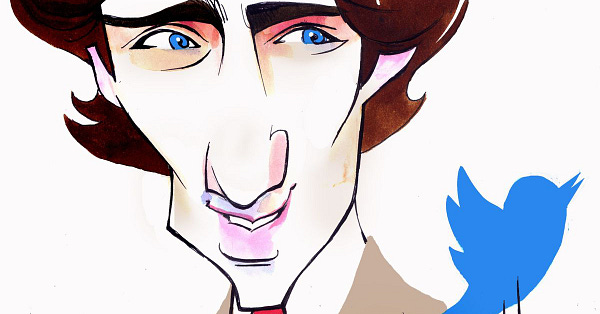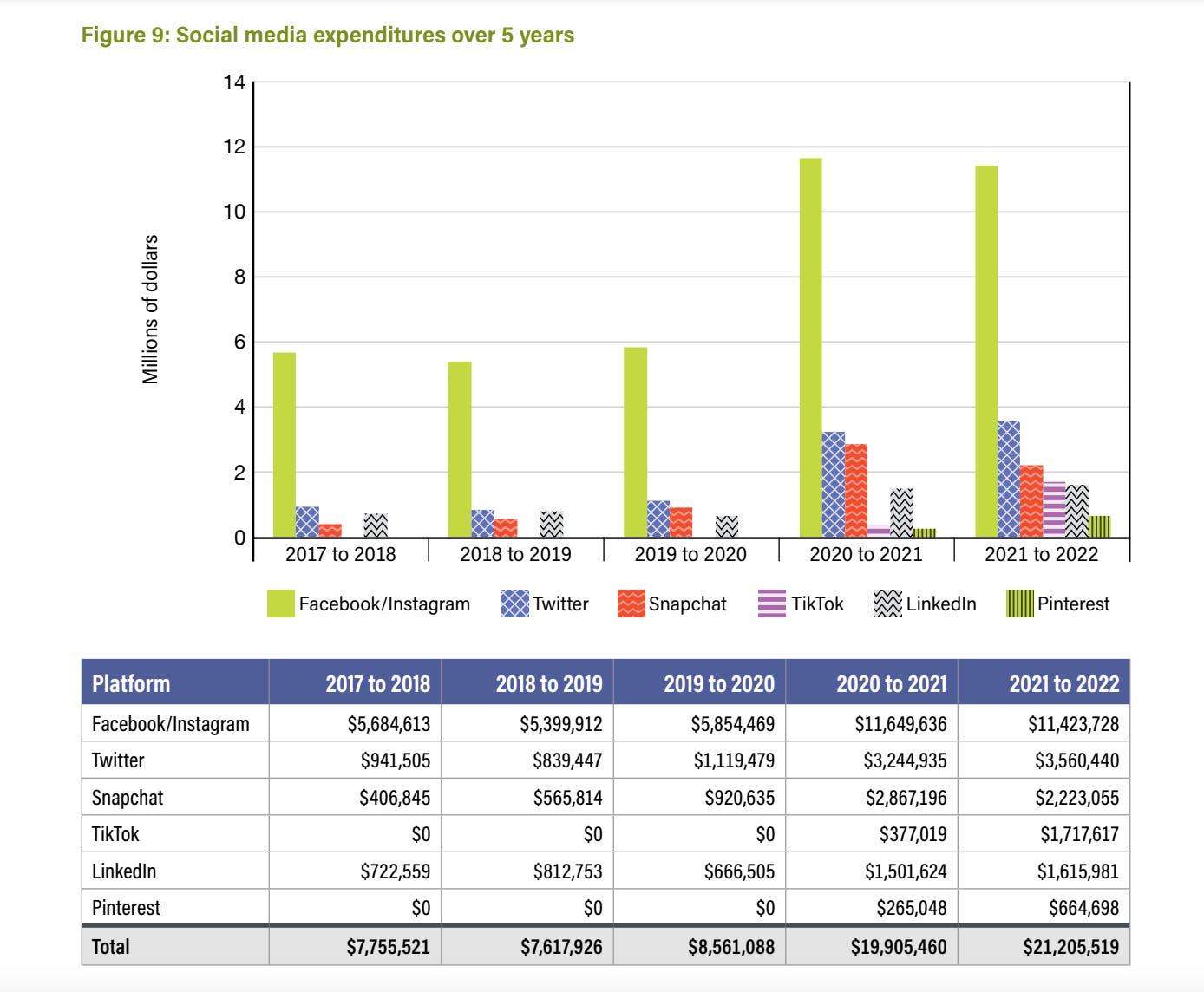✋ stop (*advertising) right now
🙏 thank you very much

*This post elaborates on a short piece that I have in the Globe and Mail today.
As we jump in circles to figure out how to support local news and combat disinformation and hate online, our federal government is supporting - through its advertising budget - the same digital platforms that have destroyed local news and poisoned our information system.
This is a prototypical example of bureaucracies designing policies that actually undermine key policy goals: while most of the government is trying to figure out how to improve our media ecosystem - the Treasury Board Secretariat (TBS) has a policy directive that actively directs advertising dollars to the platforms that are wreaking havoc on our democratic institutions and culture.
Maybe the government should pause spending on social media platforms. I can’t think of a comparable example of investment amid regulatory tension - can you? 🤷♀️
*It’s worth noting that around the same time that the U.S. Senate passed a bill to ban TikTok from government-issues devices (except for law enforcement and research uses), there was some relevant policy activity from the Ministry of Innovation, Science, and Economic Development as they introduced Bill C-34 (An Act to Amend the Investment Canada Act). One of the aspects discussed in the bill seeks to address the collection and ownership of data as a growing consideration. But this would all be in the future, and was not framed as a direct response to anything related to any concerns associated with TikTok.
Government expenditure on advertising is disclosed in an annual report that has existed for the last twenty years (Government of Canada advertising annual reports). The figure below summarises government social media expenditure over the past five years (2017-2022). 👇
Some of this modest spending allocation may be justified through the Directive on the Management of Communications, which mandates that advertising expenditure must be “cost-effective,” naturally privileging social media platforms as a result and tilting dissemination to cheaper digital vehicles.
Further, TikTok undercuts rivals with cheap ads: the cost to obtain 1,000 impressions from ads on TikTok is: 62% less than Snapchat, 50% less than Instagram, and 33% less than Twitter.
The 2020-2021 spend on TikTok was modest - $377,019 - about one quarter of the $11,649,636 spent across Facebook and Instagram. Together, that’s just over $12M, a not insignificant amount. Last year, that number more than quadrupled to $1,717,716.
As various federal policy proposals proceed, it appears that the government continues to allocate advertising dollars to promote posts on both TikTok and Twitter, alongside Meta-owned Facebook and Instagram and Google’s YouTube. This concurrent financial connection to the very firms that the state is seeking to engage with new rules is irrational.
Instead of potentially mirroring the US’ “banning” of TikTok on government devices, the Canadian Government should cease spending tax dollars advertising on social media platforms when elements of those platforms are blatantly incongruent with national policy priorities.
For instance, our Privacy Commissioner just found that Home Depot failed to obtain customer consent before sharing personal data with Meta, and a former Twitter engineer has just accused the company of failing to protect user privacy in violation of a 2011 consent decree with the FTC. Last year, the government spent $11.4M on Facebook and Instagram ads and $3.5M promoting certain Tweets while the companies exploited consumer trust.
Another tension is the reality that these platforms are important places for politicians to engage with the public. Meeting people where they are can (and should) absolutely continue, without investing advertising dollars. This may mean sacrificing some connection with younger audiences that cluster on places like TikTok unless someone’s personalised algorithm is aligned with a government’s messaging.
The reality is that policy people have ways to be much more productive when it comes to curbing the most unfavourable aspects of social media. We have a cybersecurity bill before the House, and new privacy legislation (C-27) that has specific provisions for artificial intelligence, plus the proposed modifications to the Investment Canada Act that could prevent key IP, data and technology from falling into hostile hands.
Researchers have also constructively suggested that we could better address the concerns raised by the US by seeking to regulate the data broker economy. We can do more than just ‘watch,’ the US here - we can engage in a more thoughtful way, especially given that a recent EU study on the impact of recent developments in digital advertising on privacy, publishers, and advertisers found that there is very little evidence to support claims that the use of extensive tracking and profiling yields a significant advantage compared to other digital advertising models that do not do this.
In the meantime, politicians should be wary of the potential for a ‘Streisand’ effect that could come from mimicking the US’ banning of TikTok from government devices or university campuses - perversely driving more people to digital places that may not centre their best interests. Instead, they should commit to abstaining from investing taxpayer dollars on advertising on the very platforms they are seeking to curb through a suite of live policy proposals and only engage through the posting of official government announcements and information. Such a decision would be provocative, meaningful, and as quick as drafting a post - something to reshare and discuss feverishly online, for free.









So I was reading up on CASL from your previous post, and kept noticing social media links on gov web pages. The very helpful getcybersafe.gc.ca links to the usual soc med suspects (no tik tok or Pinterest yet!) but seeing the others was weirding me out mostly because Canada’s anti-spam legislation had just nudged me to unsubscribe and hang up on my soc media- the cumulative targeted oddities had been getting me down. But here it felt like the Canadian gov was facilitating participation at the same time their messaging was safety, security, privacy. Is this on the ground policy implementation? Pairing access with ‘be smart kids’ or ‘use at your own risk’? With the deployment of AI I’m thinking we ought to have pointers from within the social media universe so that there remains a way to get out. Could advertising the getcybersafe.gc.ca site through the use channels be ok?